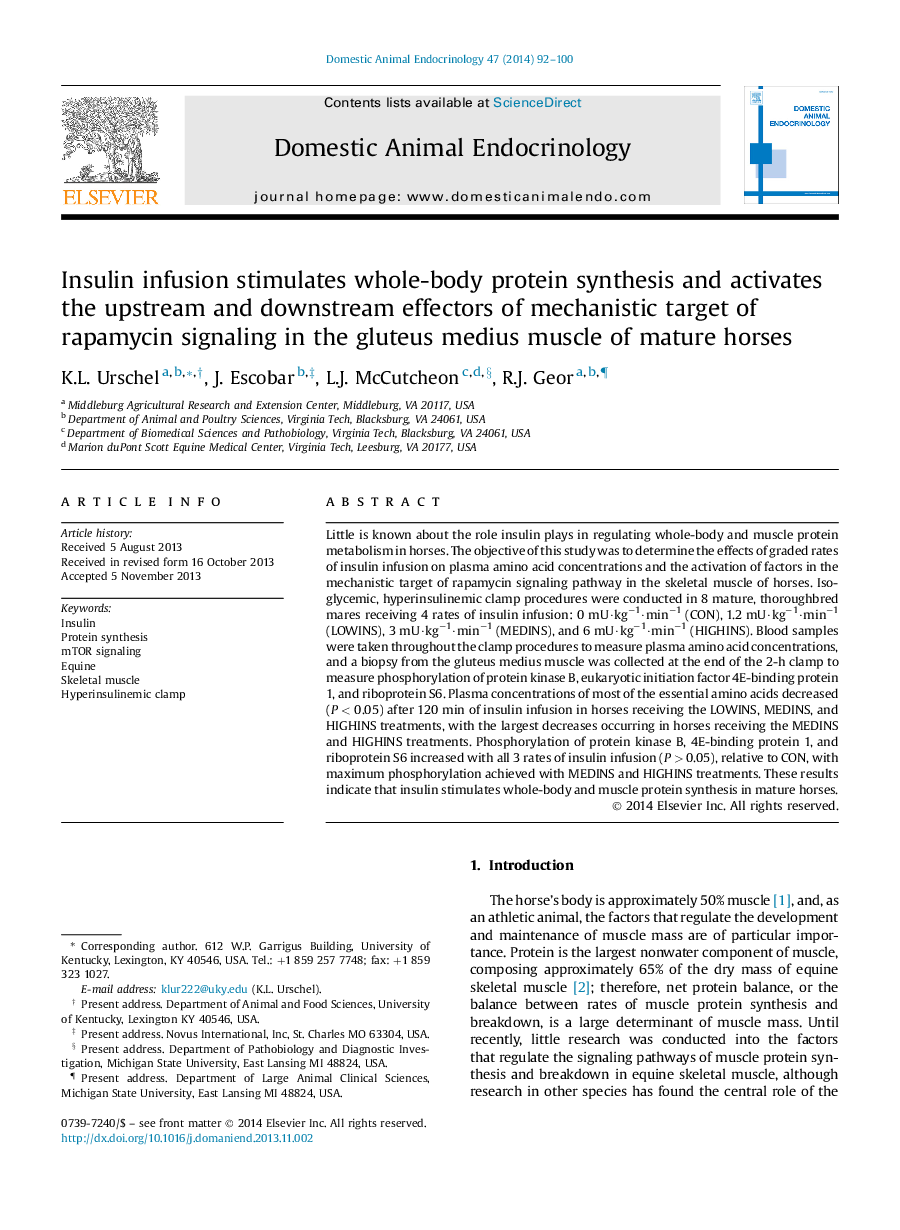| Article ID | Journal | Published Year | Pages | File Type |
|---|---|---|---|---|
| 2393516 | Domestic Animal Endocrinology | 2014 | 9 Pages |
Little is known about the role insulin plays in regulating whole-body and muscle protein metabolism in horses. The objective of this study was to determine the effects of graded rates of insulin infusion on plasma amino acid concentrations and the activation of factors in the mechanistic target of rapamycin signaling pathway in the skeletal muscle of horses. Isoglycemic, hyperinsulinemic clamp procedures were conducted in 8 mature, thoroughbred mares receiving 4 rates of insulin infusion: 0 mU·kg−1·min−1 (CON), 1.2 mU·kg−1·min−1 (LOWINS), 3 mU·kg−1·min−1 (MEDINS), and 6 mU·kg−1·min−1 (HIGHINS). Blood samples were taken throughout the clamp procedures to measure plasma amino acid concentrations, and a biopsy from the gluteus medius muscle was collected at the end of the 2-h clamp to measure phosphorylation of protein kinase B, eukaryotic initiation factor 4E-binding protein 1, and riboprotein S6. Plasma concentrations of most of the essential amino acids decreased (P < 0.05) after 120 min of insulin infusion in horses receiving the LOWINS, MEDINS, and HIGHINS treatments, with the largest decreases occurring in horses receiving the MEDINS and HIGHINS treatments. Phosphorylation of protein kinase B, 4E-binding protein 1, and riboprotein S6 increased with all 3 rates of insulin infusion (P > 0.05), relative to CON, with maximum phosphorylation achieved with MEDINS and HIGHINS treatments. These results indicate that insulin stimulates whole-body and muscle protein synthesis in mature horses.
